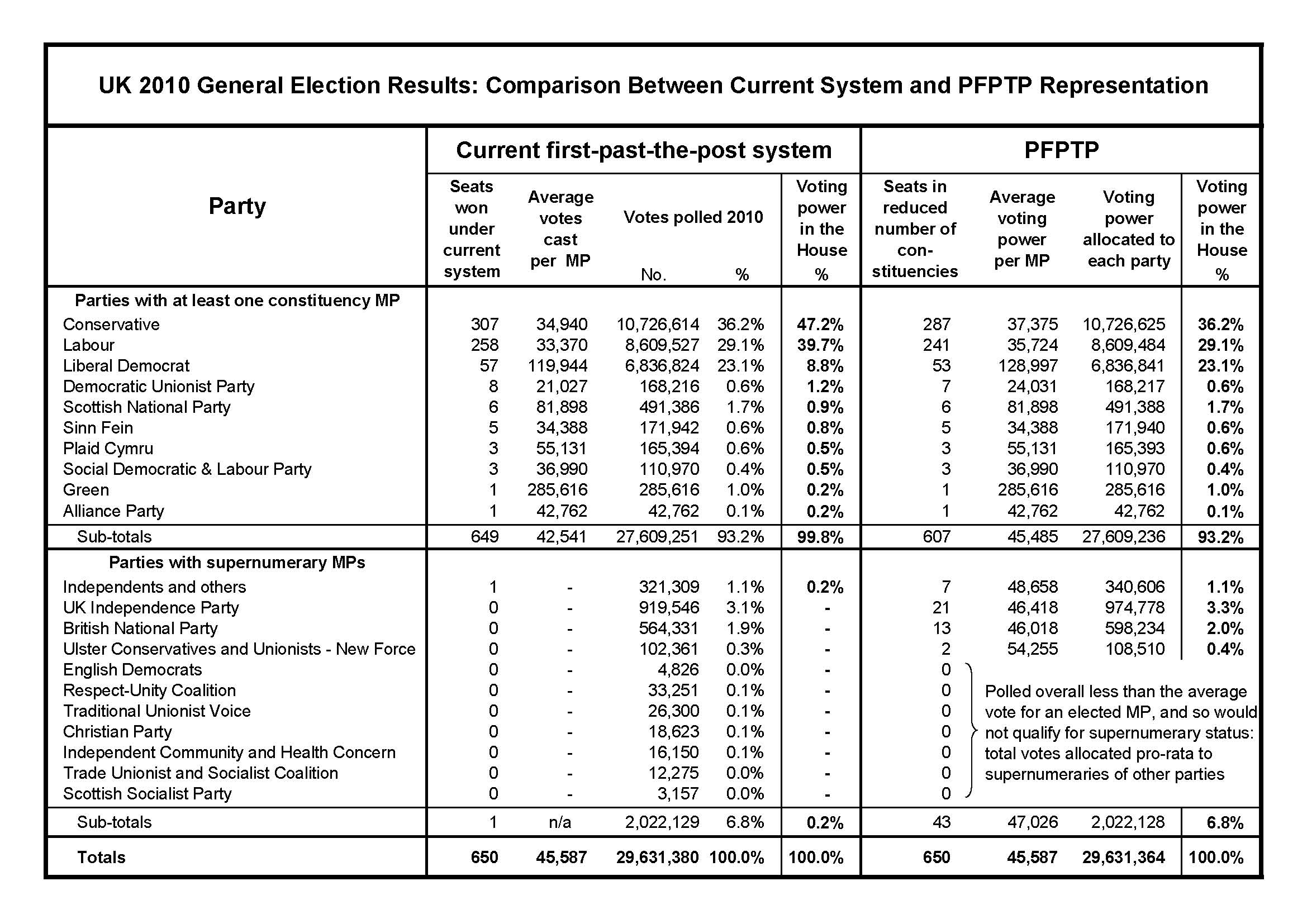- Home
- ProFirst votes in The House
- Current system vs ProFirst
- Benefits
- Disbenefits
- Proxy votes
- Independent MPs
- Supernumerary MPs
- By-elections
- Absent MPs
- Party Whips
- The AV simulation exercise
- The current voting system
- The ProFirst voting system
- AV vs ProFirst comparison
- ProFirst voting power by seat
- ProFirst voting power per MP
- UK FPTP/AV/Profirst results
Tables:

PFPTP ProFirst including the Supernumerary option
Under PFPTP ProFirst it can be seen that the proportion of the popular vote each party received is mirrored exactly in the total voting power of their MPs. In the table, "PFPTP Voting power allocated to each party" = "FPTP Votes polled 2010"
The very different FPTP "Voting power in the House" percentages show that many of the electorate voting under the present system simply wasted their vote as far as influence in Parliament was concerned, because their chosen candidate did not win the seat.
But with PFPTP ProFirst, they will have their vote assigned as follows:
- If their party of choice won seats elsewhere, then
- If they ticked the "Other" box on the ballot form which will now be available under PFPTP ProFirst, then
- to all the elected MPs from parties with no candidate standing in their constituency. This would include supernumerary MPs meeting the same criteria, if the Supernumerary option is adopted (as is assumed for this table).
- to all the elected MPs from that party, or
It should be noted that the main tables included with this report ignore the Supernumerary option, and do not explicitly take account of the Proxy-vote option either, but instead simply illustrate how the basic PFPTP ProFirst system would work when applied to the 2010 General Election voting figures.